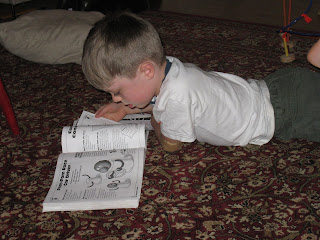Actually, it was worse than lame, for it left my kids profoundly upset.
It was a lovely summer afternoon, and the hammock beckoned. I figured I'd read Nini and Desmond about the birth of Jesus from one of our children's Bibles, and soon give some more thought about how to proceed.
But once we'd read the story of Jesus' birth, the kids wanted to hear more. And more. He gathered His disciples, performed His miracles, and the kids got more and more engrossed. "Keep reading, Mommy!" they declared, each time I proposed to put the book down for the day.
I warned them that something really bad was going to happen to Jesus, and they might not want to hear it all in one sitting. "Keep reading!" So, stupidly, I did, all the way through Jesus's arrest, crucifixion, and resurrection.
Stunned silence ensued. Here the kids had discovered this remarkably appealing protagonist, full of love and magic and good deeds, and he died gruesomely. I talked about how Christians understand it as a hopeful tale, with the resurrection as not just as a happy ending but as the centerpiece of their faith. Desmond acted like this made him feel better, but I could tell otherwise.
From that point forward, the kids refused to discuss Jesus or the New Testament at all; they just shut down.
Obviously, I screwed up. I tried to remember way back to the Methodist Sunday School of my childhood: What, if anything, were we taught about the crucifixion? Was it all just baby Jesus in the manger and adult Jesus performing miracles and preaching love? Can't recall.
So all I can say is, Don't follow my example. And if you have thoughts about approaches or resources for teaching the New Testament to the very young in a non-proselytizing, important-slice-of-world-culture way, please please share.





